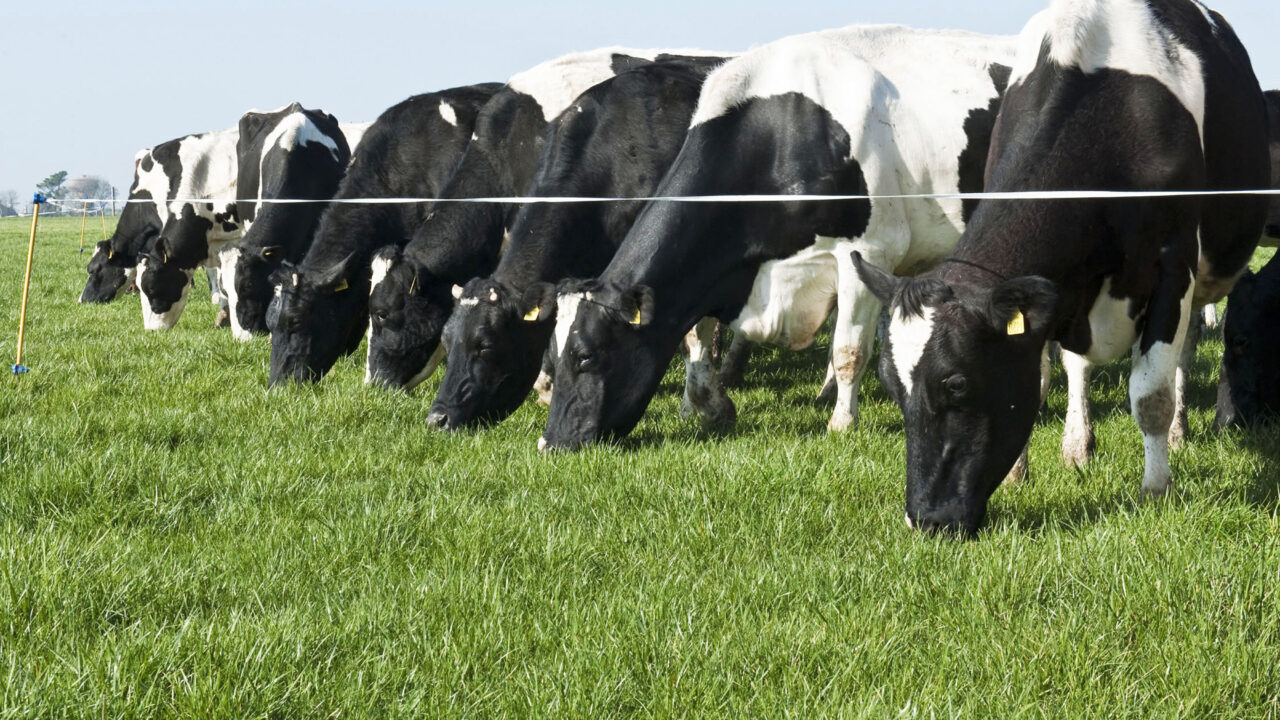What a difference a few days of dry weather makes. Ground conditions are now very good, allowing for good grass utilisation.
Although 100% of grass in the first rotation is available to the cow, (no dung pads etc), there may be paddocks were cows struggle to graze down to the target residual owing to dead material etc.
They must struggle on. Failure to graze out completely in the first rotation leads to a build up of trash at the base of the sward, reducing light to the base and will be difficult to graze out in subsequent rotations.
After grazing out such paddocks, ensure cows are allocated a large break (e.g. 2/3 of a 24-hour break) so they can have a big feed to make up for the reduced energy intake in the previous grazing. Remember – allocation is key. Do not graze ‘difficult’ paddocks in succession.
Dairy cows are creatures of habit, the preferred grazing allocation for the mid season is 24-hour grazings or 36 hours. We need to train the cows into this now or they will very quickly become accustomed to having a fresh break after each milking.
The first step is to ensure residuals of 3.5-4cm are being achieved and then keep the fence wire usage to a minimum.
Soil fertility has a huge impact on spring and autumn growth rates in particular. Soils that have a lower than desired pH (<6.3-6.5), low P indices or K indices must be addressed. The pH gives us an idea of the calcium levels in the soil – it is not always a true reflection of calcium levels, but a rough guide.
Low calcium results in poor soil filtration and nutrient availability. We must have adequate calcium levels in our soils if we are to target 16t DM/ha.
When can lime be applied? As soon as you identify a deficiency. Monitor the weather forecast as lime must be washed off leaf before cows can graze paddock. If soil samples illustrates pH is very low (below 5.8), I would be going out with calcium limestone and two bags/acre of granulated lime.
This is expensive but will have a huge effect on building calcium levels fast. The granulated lime will feed the plant with sufficient calcium for this year and the ground limestone will build calcium levels in the soil. Granulated lime is expensive so only use on very low pH paddocks.
Growth rates are variable between farms with anything from 7kg to 20kg/day. The greater the area grazed, the higher the growth rates. On farms where the average farm cover (AFC) is now down to 400-500kg, follow the budget strictly to ensure AFC does not drop any lower than 10 times demand by magic day.
If supplement has to go in, do so now to correct feed deficit. In the grass budget, ensure cow numbers, herd demand and growth rates are accurate. We are four to six weeks away from the start of breeding for many farms and cow body condition score is of paramount importance; as an indicator of the cow’s energy reserves.
If you cannot body condition score your herd, ask someone to help you. Under-conditioned cows will need to go on once a day milking for three to four weeks. Feeding high levels of concentrates to these cows will further drive production and accelerate body condition loss.
We vet check first lactation animals to identify any non-cycling or dirty animals and treat them accordingly. All animals will be tail painted now and pre-breeding heats will be recorded. While we haven’t done this previously, I think it will help to ensure we are picking up any problem cows several weeks before breeding actually starts.
For more information on anything mentioned above or if you want to have a farm walk or discussion group facilitated by myself, contact details are below. Enjoy the good weather!
Cathal McAleer is a grassland consultant working with individual farmers and facilitating discussion groups throughout Ireland.
You can contact Cathal on 087 160 2491 / 0044 7749 531679 or by email: [email protected]

